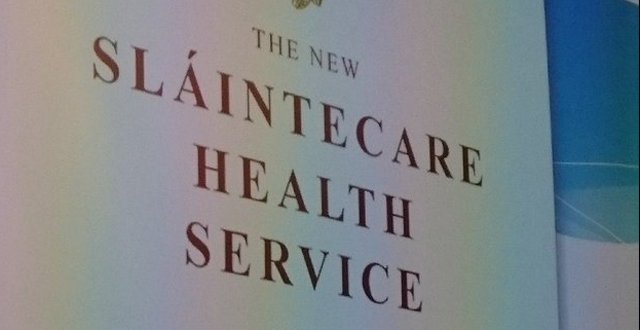
There has been much discussion, since its publication in May last year, of the <em>Sláintecare</em> plan, drawn-up by the cross-party Oireachtas Committee on the Future of Healthcare. The plan is being seen as a blueprint for the development of the Irish health system for the next decade.
Among the key recommendations of the Committee’s report are the removal of private practice from public hospitals and the extension of GP care free at the point of use to the entire population. It also recommends the reduction or removal of a number of charges for healthcare services, including the Drugs Payment Scheme threshold, prescription charges for medical card-holders, and the emergency department charge for those without a GP referral, which were introduced and/or increased during the recession as a greater share of health expenditure was shifted to private sources during a period of fiscal austerity.
The cost of the plan was announced as being €2.8 billion over 10 years, which many criticised as being insufficient. However, this was the result of ambiguous wording. The document actually envisages Government health spending increasing over the lifetime of the plan to the point where, by year 10, an extra €2.8 billion per annum will be spent compared to the beginning of the plan. This €2.8 billion per annum is over and above the increases in spending arising from medical inflation and demographic pressures, which the report estimates will add 3 per cent to the budget annually.
However, some of this increase, which will come from Government spending, will be offset by a reduction in direct payments by households for healthcare services, in part arising from the reduction and removal of charges and the removal of GP fees. Specifically, the report estimates that when the plan is fully implemented, households will be paying €1.482 billion per annum less than currently in direct health expenditure (between €285 and €294 per person).
This anticipated reduction in direct payments also includes a reduction in spending on private health insurance. Premium income in this sector totalled almost €2.4 billion in 2016. The predicted fall in this figure stems from the anticipated reduction in demand for private health insurance, resulting from the removal of private practice from public hospitals. This move should firstly lead to shorter waiting times for public patients and secondly, a possible increase in waiting times for private patients, depending on the capacity of the private hospital sector to deal with the additional demand from private patients who will no longer be treated in public hospitals. Previous studies have shown that concerns about access to the public hospital system and a desire to be treated more quickly are key drivers of demand for private health insurance.
The shift (back) from private payments to publicly-funded healthcare is a good thing from an equity perspective. Private funding mechanisms for healthcare, including out-of-pocket payments such as the charges mentioned above and private health insurance premiums, tend to be regressive — whereby those on lower incomes pay a higher proportion of their income — while public funding sources, such as taxation, tend to be progressive, whereby those on higher incomes pay a higher proportion of their income.
In addition to the €2.8 billion per annum increase in current expenditure, the <em>Sláintecare </em>report proposes a once-off €3 billion transition fund over the first six years of the plan, which includes provision for eHealth initiatives, more primary care centres, the expansion of staff training, expanded diagnostic capacity at primary care level, and renovation and hospital bed capacity.
In relation to capacity, the subsequent <em>Health Service Capacity Review</em>, published earlier this year, suggests that between now and 2031, if the <em>Sláintecare</em> proposals are fully implemented, there will be a need for an extra 2,590 acute hospital beds, a 48 per cent increase in the primary care workforce, a 43 per cent increase in residential care beds and a 120 per cent increase in home care.
The review estimates that, if the care delivery model is not changed (what it calls the ‘Baseline scenario’), there will be a need for 5,360 extra acute hospital beds (or 7.150 if occupancy levels are to be reduced to safe levels), a 37 per cent increase in the primary care workforce, a 40 per cent increase in residential care beds and a 70 per cent increase in home care.
The capital element of these capacity increases is provided for in the <em>National Development Plan</em>, published in February, which contains a €10.9 billion provision for health projects over the period 2018-2027 (out of a total of almost €116 billion). These include an additional 2,600 acute hospital beds, as envisaged by the capacity review, 4,500 long-term and short-term residential beds in community nursing homes, and additional primary care centres and community diagnostic facilities.
If fully implemented, the <em>Sláintecare</em> proposals will result in a greatly improved health system. However, one issue that has not been widely discussed publicly is where the money to pay for it all will come from. This issue needs to be addressed sooner rather than later as, while the cross-party nature of the plan gives a real opportunity for progress, if it is not properly funded, then it will lead to continued problems in the health service in years to come.





Leave a Reply
You must be logged in to post a comment.